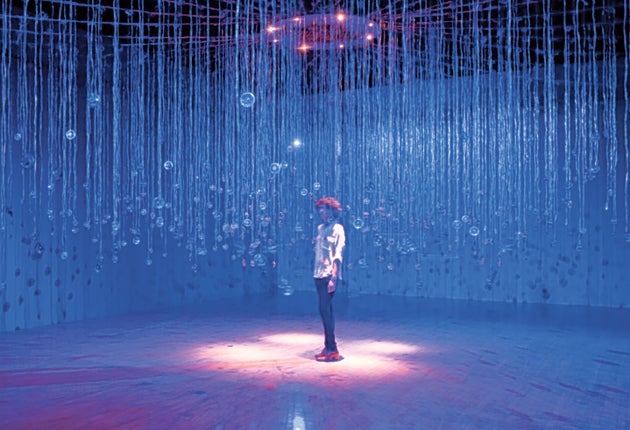Susan Hiller, Tate Britain, London

Susan Hiller is highly adept at reminding us that life's great wonder and strangeness, its joys and its tragedies, are those that defy total explanation. Love, religious belief and trauma are as difficult to describe as ghosts and UFOs. In Hiller's work, Witness (2000), you can put your ear to one of the hundreds of tiny speakers that hang suspended from glittering wires. Most of them are dry reports of UFO sightings in different languages, as if from a file, but when, suddenly, you hear a voice, which is that of a person describing their own experience of a sighting, that's a little like love. "Believe me" is the hidden message in their voice.
Hiller, an American-born artist, now 70, originally studied anthropology, and began practising as an artist when she moved to London in the early Seventies. Her approach, and, indeed, much of her visual sensibility, extends from her research-based training: cataloguing, collecting, analysing and presenting. One of the interesting things about this retrospective is that it's possible to see not only Hiller's development as an artist, from the 1970s up to the present day, but also a short history of contemporary art in Britain. From a post-minimalist aesthetic of her early conceptual paintings (cutting up the canvas or unthreading it) through to the rather dry, grey, conceptualism in the 1970s, from experiments with audio and video through to the museological turn in the 1990s – a great example being Hiller's From the Freud Museum (1991-96). This work, inspired by Hiller's research into Freud's collection of possessions, consists of sets of archival boxes, containing objects that rub up against the labels attached to their lids. A set of rather domestic-looking jugs for cream in the shape of cows (the spouts are the cows' mouths) are presented with information about "Cattle" Annie Medcalf, a cowgirl outlaw of the wild west. Two pictures, then, of women and cows, trapped at home and free on the range.
The high point of this exhibition comes at the end, however, with several large-scale installations. Psi Girls (1999) is a large, five-screen installation showing brightly tinted clips from Hollywood films featuring girls and young women with paranormal powers. One of the young witches from 1996's The Craft rotates a pencil balancing on its lead point on her school desk, on another screen a young Matilda (1996) makes objects fly around the room. The camera caresses the faces of these girls at these moments of high tension, drawing attention to the curious fissure between fear and desire created by the film. The ghosts in the The Last Silent Movie (2007) aren't of the supernatural sort, however. In this film, we hear the voices of dead and dying languages from audio archives, and hear the stories and sayings that are doomed to die with them. One of the languages, Silbo Gomero from the Canary Islands, sounds like whistling: "Bring the castanets," it says. Another, Sorbian, tells of lies: "They said there were no Indians here before the flood," says the voice, its language, and, potentially, the truth of the message, are lost in a different kind of flood.
To 15 May (020 7887 8888)
Join our commenting forum
Join thought-provoking conversations, follow other Independent readers and see their replies
Comments
Bookmark popover
Removed from bookmarks